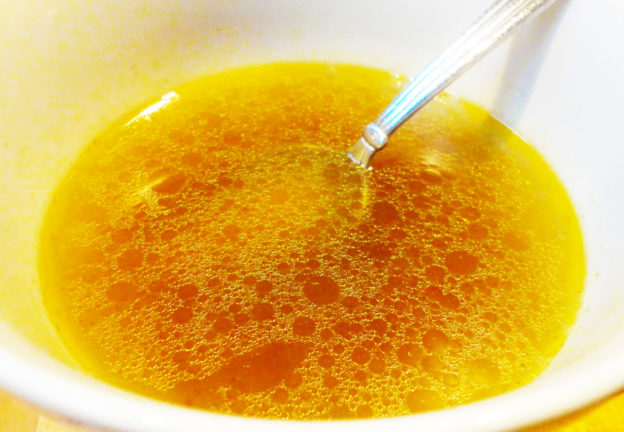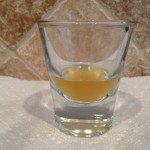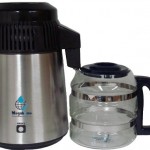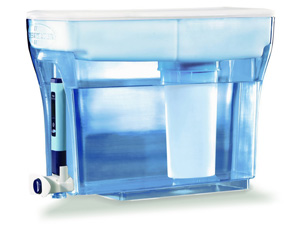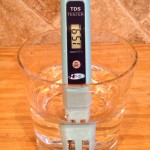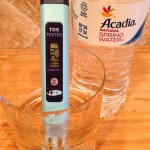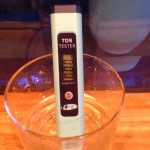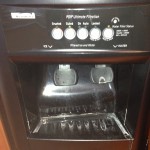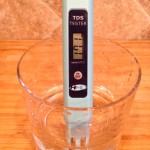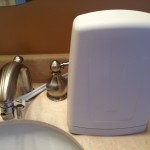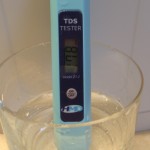My introduction to bone broth came from reading a book on fasting. It recommended consuming homemade bone broth to provide essential nutrients and to help with hunger pains while fasting, however, you don’t need to fast to enjoy its many health benefits. The important thing to know is you can’t buy high quality bone broth. There are tons of brands out there that tout labels of “organic” and “grass-fed,” but trust me, I’ve tried them and it’s not the same. You just have to make the magical and natural concoction yourself.
I’ve made bone broth using both chicken and beef bones. My personal preference is chicken over beef. Each has it’s own distinct flavor, but I find the chicken reminds me of a rich immune-boosting homemade chicken noodle soup sans noodles. I discussed the magical properties of Bone Broth last week on The Mike O’Meara Show and many of the TMOS listeners asked me to post the recipe. So here goes:
The Best Bones
The best bones are the ones that do the most moving (such as joints) and contain the most marrow. Instead of using chicken legs, use the whole quarter–or even better, the whole chicken. Chicken feet and beef knuckles have the most collagen and will make for a richer and healthier batch. If you’re going to spend the effort making this then you might as well make the best batch possible. Check your local farmer’s market for buying grass-fed beef bones or organic chicken. Check international grocery stores for buying chicken feet if your local butcher or farmer’s market doesn’t carry them.
Chicken Preparation
If cooking chicken legs, quarter, or whole chicken then you’ll want to save the chicken stock from the initial boil. If cooking beef bones or chicken feet skip this step.
- Put chicken in a large stockpot, cover with water, add a few generous pinches of pink Himalayan salt, and simmer until meat is cooked (about 15-20 minutes after you start to see bubbles).
- Take meat and bones out of water, pull meat off bones (if using bones with meat) and save for another recipe/meal, continue to simmer water and proceed to final directions.
Chicken Feet and Beef Bone Preparation
If cooking with beef bones or chicken feet you’ll want to prepare them with a quick boil and then dump the water. It won’t smell especially pleasant and you don’t want to reuse like you would if doing a full chicken.
- Boil the chicken feet or beef bones for 5-10 minutes.
- Remove from pot and dump the water.
- If cooking chicken feet, cut off the tips of toes/claws and discard.
- Proceed to final directions.
Final Directions
-
- Place bones on a sheet pan and roast at 450-500 degrees for 45-60 minutes. Bones will become golden brown and smell really good. They can take a lot of heat. The longer they roast (without burning) the better the broth will taste.
- If you prepared chicken then return it into the existing chicken stock. If you prepared chicken feet or beef bones: Place roasted bones into the stockpot with fresh water and add a few generous pinches of pink Himalayan salt.
- As the broth cooks down, you’ll need to add more water. This is usually done 2-3 times during the entire cooking process depending on how long you simmer the broth and bones.
- Simmer chicken bones at least 8-10 hours and beef bones at least 24-48 hours. If you aren’t comfortable leaving the stove on that long, you can place the broth and roasted bones in a crockpot and continue the process there.
- When broth is done, remove bones, and pour through fine mesh strainer or sieve.
Congrats on making your first batch of healthy homemade bone broth. It is best consumed over the next few days, but it can also be frozen if you want to consume it at a later time. I portion the broth before freezing so it’s easy to thaw and drink when I need a quick immune boost or when I’m doing a shorter fast and need a smaller amount. Enjoy!
